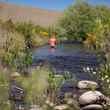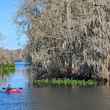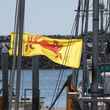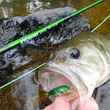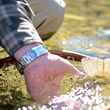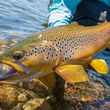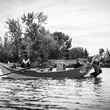Could it be said that the Elwha River has become the celebrity figurehead of the growing trend of dam removal in the United States? And if not, should it be? Since dam removal efforts began just over 3 years ago, the Elwha has show the world much of what can happen -- and happen quickly -- when impediments in a river are removed. The images have been dramatic, not only at the two dam removal sites, but all the way to the mouth of the Elwha where it meets the Pacific Ocean. Most recently, Olympic National Park officials released information which indicates that the river is seeing the largest run of chinook salmon in over two decades.
According to park officials, "biologists representing Olympic National Park, Lower Elwha Klallam Tribe, U.S. Geological Survey, Washington Department of Fish and Wildlife (WDFW), and NOAA Fisheries navigated over 13 miles of the Elwha River and tributaries with the goal of counting all the living and dead adult Chinook and map the spawning salmon's redds. Biologists walked and snorkeled the river from Glines Canyon Dam to the Strait of Juan de Fuca, as well as the lower portions of three of the river's tributaries - Indian Creek, Hughes Creek, and Little River." Park officials noted that the returns were "the largest run of Chinook salmon since 1992".



